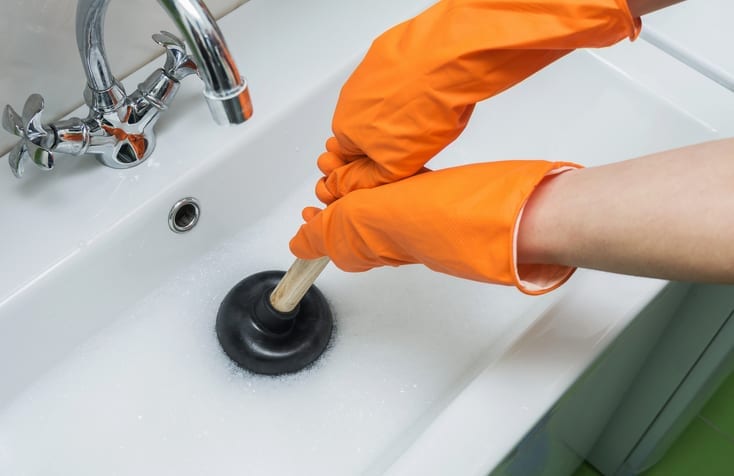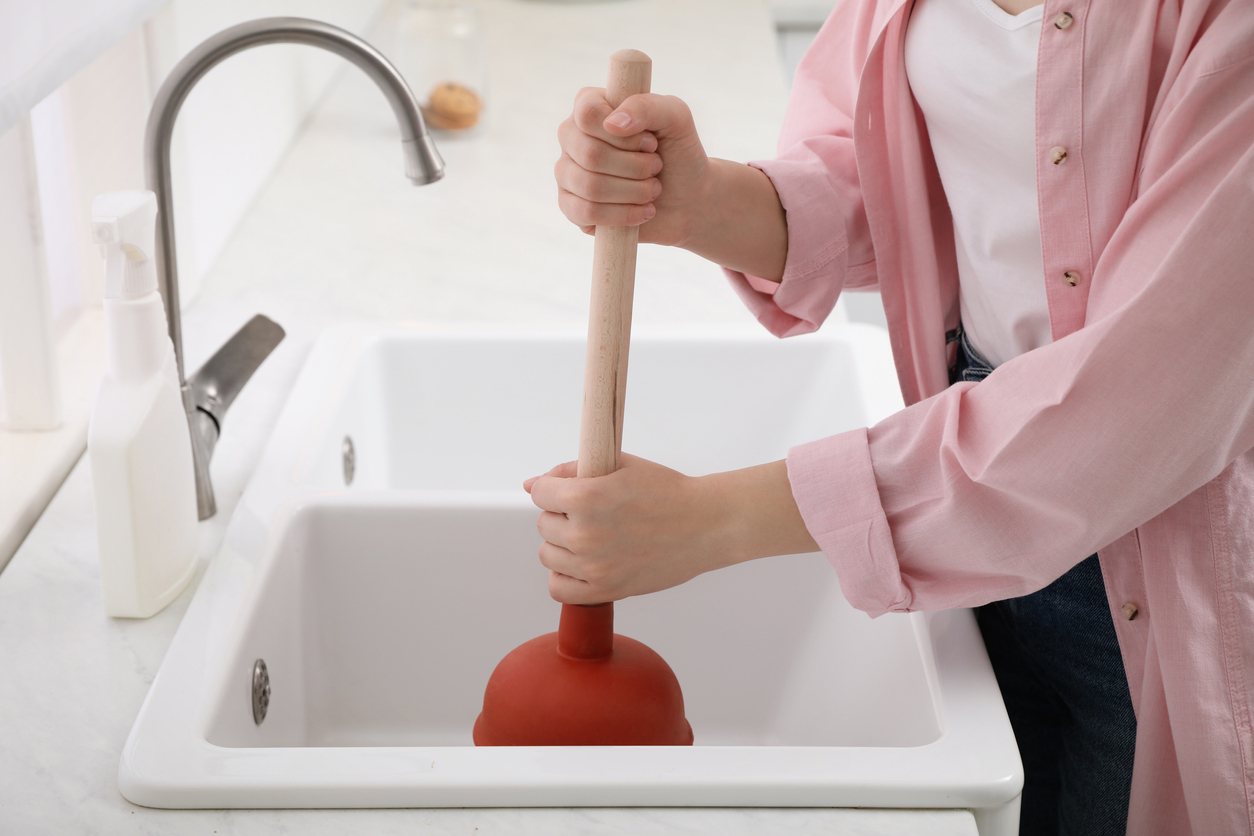Each person maintains their private piece of advice in relation to How To Use Your Toilet Plunger Correctly in 5 Easy Steps.

Introduction
Correct maintenance of family drains pipes is necessary for protecting against clogs and making certain smooth water flow. One of the key devices in every home owner's toolkit is the bettor, along with numerous drainpipe cleaners created to deal with stubborn blockages successfully. This post checks out exactly how to utilize plungers and drain cleaners successfully to maintain your drains streaming freely.
Area 1: Understanding Bettors
Sorts of Plungers
There are a number of sorts of bettors offered, each designed for various kinds of drains pipes and blocks. The most typical types include mug plungers, flange bettors, and accordion bettors.
Just How Plungers Job
Bettors service the concept of developing stress and suction to displace blockages. When properly applied over a drainpipe, they create a vacuum that can pull out particles or break up blockages.
Choosing the Right Plunger
Selecting the ideal bettor depends on the type of drain and the nature of the obstruction. Cup bettors are perfect for sinks and bathtubs, while flange plungers are much better matched for bathrooms due to their design.
Typical Blunders with Plungers
Avoiding these errors guarantees efficient plunging: inappropriate seal around the drainpipe, not enough force, and not clearing surrounding debris.
Section 2: Making Use Of Plungers Properly
Preparation
Prior to diving, make sure the bettor covers the drainpipe entirely and forms a tight seal. Clear any visible particles around the drainpipe opening.
Method
Start with gentle plunging motions to build suction. Boost stress progressively, utilizing a consistent rhythm. Repeat as needed until the drainpipe gets rid of.
Fixing Tips
If plunging doesn't work, try changing the seal, applying oil jelly for a far better seal, or utilizing a various type of plunger.
Section 3: Understanding Drainpipe Cleaners
Types of Drain Cleaning Company
Drain cleansers can be chemical or chemical. Chemical cleaners use strong chemicals to dissolve clogs, while enzymatic cleaners utilize natural enzymes to break down raw material.
Just How Drainpipe Cleansers Job
Chemical cleansers react with clogs to liquify them, while enzymatic cleansers break down organic products like hair and oil without damaging pipelines.
Safety Factors to consider
Always use gloves and eye protection when using chemical drainpipe cleaners. Guarantee adequate ventilation and comply with maker directions meticulously.
Eco-Friendly Alternatives
Take into consideration making use of vinegar and cooking soda or enzyme-based cleaners for green choices that are safer for pipelines and the atmosphere.
Section 4: Utilizing Drain Cleaners Successfully
Application Strategies
Put chemical cleansers directly right into the drain opening. Enable them to work for the advised time prior to purging with warm water. Enzymatic cleaners should rest overnight.
Preventative measures
Stay clear of blending different sorts of cleaners, as this can generate poisonous fumes. Never make use of chemical cleansers together with a plunger, as spilling can occur.
Taking Care Of Persistent Blockages
For persistent clogs, think about using a pipes snake or calling a professional plumbing technician to prevent damages to pipelines.
Conclusion
To conclude, recognizing exactly how to utilize bettors and drainpipe cleaners properly is necessary for preserving healthy pipes systems. By selecting the right tools and strategies, homeowners can take on small obstructions and avoid significant pipes concerns down the line.
How to Use a Plunger to Unclog a Drain
The humble plunger is a simple yet effective tool for breaking clogs in sinks, tubs and toilets. This handy tool is easy to use. You can make the most of its power if you understand how it works. Ready to dive in? Here’s what you need to know.
Safety First!
Never use a plunger with drain chemicals. Water will splash as you work, and the chemicals can spatter, burning skin and eyes. It’s a good idea to use rubber gloves and wear safety goggles when you work on a clog.
Choose the Right Tool for the Job
Plungers come in two different styles. Sinks, bathtubs and showers require a cup plunger. Like its name suggests, the rubber end is shaped like a cup. Use a flange plunger on toilets. These plungers have a rubber funnel extending from the cup. A plunger needs to be big enough to cover the drain.
Ready, Set, Plunge!
Coat the rim: Coat the plunger rim with petroleum jelly. This helps make a better seal.
Block outlets: Hold a wet rag over nearby outlets such as the overflow vent or the drain in a second sink.
Release air: Insert the plunger at an angle into the water. Water will displace air in the cup. A water-filled cup is more forceful than one filled with air.
Keep the plunger upright: Hold the plunger perpendicular to the drain. Use fast, forceful strokes, but make the first stroke gentle. The first stroke can create a splash if the cup still contains air. Thrust the plunger 15 to 20 times.
Snap off the plunger: The final stroke should be a strong upward motion that ends when the plunger snaps off the drain.
Repeat the process: you may need to repeat this sequence several times. When the water drains away, your work is done. High-five! https://plumbernw.com/blog/how-to-use-a-plunger-to-unclog-a-drain/

Application Strategies
Put chemical cleansers directly right into the drain opening. Enable them to work for the advised time prior to purging with warm water. Enzymatic cleaners should rest overnight.
Preventative measures
Stay clear of blending different sorts of cleaners, as this can generate poisonous fumes. Never make use of chemical cleansers together with a plunger, as spilling can occur.
Taking Care Of Persistent Blockages
For persistent clogs, think about using a pipes snake or calling a professional plumbing technician to prevent damages to pipelines.
Conclusion
To conclude, recognizing exactly how to utilize bettors and drainpipe cleaners properly is necessary for preserving healthy pipes systems. By selecting the right tools and strategies, homeowners can take on small obstructions and avoid significant pipes concerns down the line.
How to Use a Plunger to Unclog a Drain
The humble plunger is a simple yet effective tool for breaking clogs in sinks, tubs and toilets. This handy tool is easy to use. You can make the most of its power if you understand how it works. Ready to dive in? Here’s what you need to know.
Safety First!
Never use a plunger with drain chemicals. Water will splash as you work, and the chemicals can spatter, burning skin and eyes. It’s a good idea to use rubber gloves and wear safety goggles when you work on a clog.
Choose the Right Tool for the Job
Plungers come in two different styles. Sinks, bathtubs and showers require a cup plunger. Like its name suggests, the rubber end is shaped like a cup. Use a flange plunger on toilets. These plungers have a rubber funnel extending from the cup. A plunger needs to be big enough to cover the drain.
Ready, Set, Plunge!
Coat the rim: Coat the plunger rim with petroleum jelly. This helps make a better seal. Block outlets: Hold a wet rag over nearby outlets such as the overflow vent or the drain in a second sink. Release air: Insert the plunger at an angle into the water. Water will displace air in the cup. A water-filled cup is more forceful than one filled with air. Keep the plunger upright: Hold the plunger perpendicular to the drain. Use fast, forceful strokes, but make the first stroke gentle. The first stroke can create a splash if the cup still contains air. Thrust the plunger 15 to 20 times. Snap off the plunger: The final stroke should be a strong upward motion that ends when the plunger snaps off the drain. Repeat the process: you may need to repeat this sequence several times. When the water drains away, your work is done. High-five! https://plumbernw.com/blog/how-to-use-a-plunger-to-unclog-a-drain/

We had been guided to that article on Tips on How to Effectively Use a Plunger from a buddy on our other web address. Sharing is good. Helping people is fun. Thanks a bunch for being here. Please pay a visit to our site back soon.
Click Here